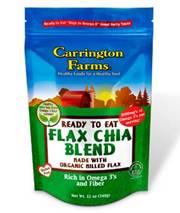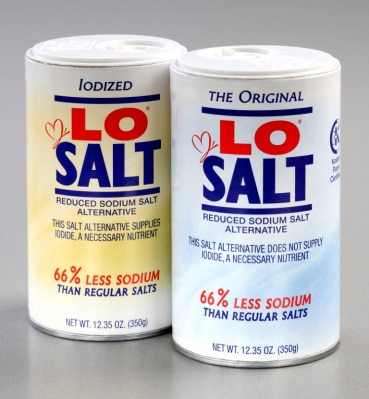This February, SEE International is observing Low Vision Awareness Month. What, exactly, is low vision, and how is it distinguished from blindness? “Low vision” usually refers to partial loss of sight that can’t be fully corrected by prescription lenses, medical treatment, or surgery. Low vision and blindness share many of the same causes, including age-related macular degeneration (AMD), glaucoma, cataracts, and diabetic retinopathy (DR), and it can affect people of all ages. While low vision may not necessarily lead to incurable blindness, it can make common, everyday tasks like reading, writing, or driving more difficult.
You should have regular dilated eye exams to determine your eye health, but there are many signs that can signal vision loss. For example, even with your regular glasses, do you have difficulty:
• Recognizing faces of friends and relatives?
• Doing things that require you to see well up close, like reading, cooking, sewing, or fixing things around the house?
• Picking out and matching the color of your clothes?
• Reading street and bus signs or the names of stores?
Vision changes like these could be early warning signs of eye disease.
A low vision eye examination can detect and diagnose conditions that lead to low vision early enough to treat them. A low vision exam differs from a standard eye exam in that it focuses on the functional eyesight needed to accomplish day-to-day tasks, like reading a newspaper or recognizing faces from a distance. Although these tests typically take longer than a standard eye exam, they can be extremely helpful in slowing or halting conditions that lead to low vision.
If you think you may have low vision, you should talk with your eye care professional. Some sight disorders, like diabetic retinopathy, can be treated to restore or maintain your vision. Even if your eye care professional says that nothing more can be done for your vision, you should ask about vision rehabilitation. These programs offer a wide range of services, such as low vision evaluations and special training to use visual and adaptive devices. They also offer guidance for modifying your home, as well as group support from others with low vision. Devices like illuminated stand magnifying glasses, electronic reading aids, glare shields, and computer programs can be extremely helpful for those suffering from low vision.
SEE International encourages everyone to join us in observing Low Vision Awareness Month by scheduling a thorough eye exam. If you or someone you know is suffering from vision loss that cannot be treated by prescription glasses, medical treatment, or surgery, ask your ophthalmologist for a low vision exam.
About SEE International
Surgical Eye Expeditions (SEE) International is a nonprofit, humanitarian organization that provides medical, surgical, and educational services by volunteer ophthalmic surgeons with the primary objective of restoring sight to disadvantaged blind individuals worldwide. www.seeintl.org
___________________________________________________________________
NATIONAL NUTRITION MONTH TREAT

.jpg)
Healthy Crisp Bar
Ingredients:
· 4 cups Crispy Brown Rice cereal
· 1 cup mini choc chips
· 1/3 cup Carrington Farms Flax/Chia blend
· 1/2 cup sun butter
· 1/2 cup light brown sugar
· 1/2 cup blue agave
· 1 tsp vanilla
Directions:
In a large mixing bowl, combine cereal, chips and flax/chia. Mix well and set aside.
In a small saucepan, add sun butter , brown sugar, and blue agave. Mix together well. Warm on medium heat, stirring frequently until slight bubbles appear. Remove from heat. Add vanilla to the mixture and stir until mixed well.
Slowly pour small amounts of the mixture into the mixing bowl with dry ingredients. You must continue to mix the mixtures together to coat the dry ingredients completely. Repeat this step until the saucepan is emptied and the rice cereal mixture is completely coated
Pour into an aluminum cake pan (9x13 inch) which has been coated with a non-stick spray. Using a wooden spoon or a spatula, pat down the mixture completely. Let it sit until slightly cooled. Cut into 12-16 squares. Refrigerate when cooled.
___________________________________________________________________________
10 THINGS YOU DIDN’T KNOW ABOUT SALT
~ Salt Awareness Week is Just Around the Corner ~

The World Action on Salt and Health (WASH) is sponsoring its sixth annual Salt Awareness Week from March 10 to March 16 to gain worldwide recognition of the health risks associated with consuming too much salt. While salt is an essential part of our daily diet, there are still many things most of us aren’t necessarily aware of about this common ingredient.
With Salt Awareness Week just around the corner, Caroline Klinge, Marketing Manager for Klinge Foods Ltd., producer of LoSalt®, a leading reduced sodium salt, offers up little-known salt facts. Whether it is a fun tip about alternative ways you can use salt or statistics that verify the massive amounts of salt we consume on a national basis, Klinge shares her knowledge and insights to keep us informed.
There is a common misconception that sea salt has less sodium than regular table and rock salt,” advised Klinge. Yet, sea salt, rock salt and regular table salt are all 100 percent sodium chloride. According to a national independent survey conducted last fall by Ebiquity for LoSalt, almost 60 percent of all respondents believed that sea salt has less sodium chloride than regular table salt.
Only the reduced sodium salt sector has less than 100 percent sodium chloride. LoSalt, for example, has 66 percent less sodium than table, sea or rock salt, a greater sodium reduction than any major competitor, while still maintaining the same great taste of regular salt.
Keeping salt in your kitchen will help you in a non-cooking crisis too,” said Klinge. It can be used to extinguish a grease fire: pour salt on top; never use water.
Nine out of 10 Americans eat too much salt, and the more salt you eat the higher your blood pressure will be, according to The Centers for Disease Control (CDC).
Called “the silent killer,” high blood pressure is the leading global risk for mortality, resulting in seven million deaths per year, based on information from Consensus Action for Salt and Health (CASH).
The problem of excessive salt intake is not just confined to adults. According to the American Heart Association (AHA), 97 percent of children eat too much salt, resulting in a predisposition to high blood pressure. “Children learn from what their parents eat, and this creates a cycle that we want to stop,” said Klinge.
You can use salt to test for rotten eggs: put an egg in a cup of salty water. A fresh egg will sink; a spoiled egg will float.
More than 75 percent of our sodium intake comes from processed foods. “This means it is harder to control sodium intake, so it is especially important to reduce sodium when prepping your own food,” continued Klinge.
Use salt outside as a weed killer. Sprinkle salt on the grass growing in cracks in the cement or between bricks; then pour hot water over it.
The recommended daily sodium intake is less than 2,400 mg according to the Dietary Guidelines established by the U.S. Food and Drug Administration (USFDA). Surprised? Results from the Ebiquity survey for LoSalt confirmed that only 41 percent were aware of this statistic.
Sodium is essential for your body to properly function in terms of blood pressure, cellular work, fluid distribution and electrical activity, so we can’t give it up entirely. Know the facts, use the tips and welcome LoSalt into your home.
LoSalt® is the U.K.’s leading healthy, low-sodium alternative to salt sold worldwide and in more than 4,500 stores in the U.S., including national chains such as Kroger, Whole Foods Market and Safeway as well as natural food stores and independents. LoSalt has 66 percent less sodium that regular table, sea and rock salts, but tastes just like regular salt. A great source of potassium, LoSalt is a natural product. It is a product of Klinge Foods Ltd., based in East Kilbride, Scotland just south of Glasgow. For more information, please visit their website http://www.losalt.com/, become a fan at https://www.facebook.com/losalt and follow them at https://twitter.com/LoSalt.





